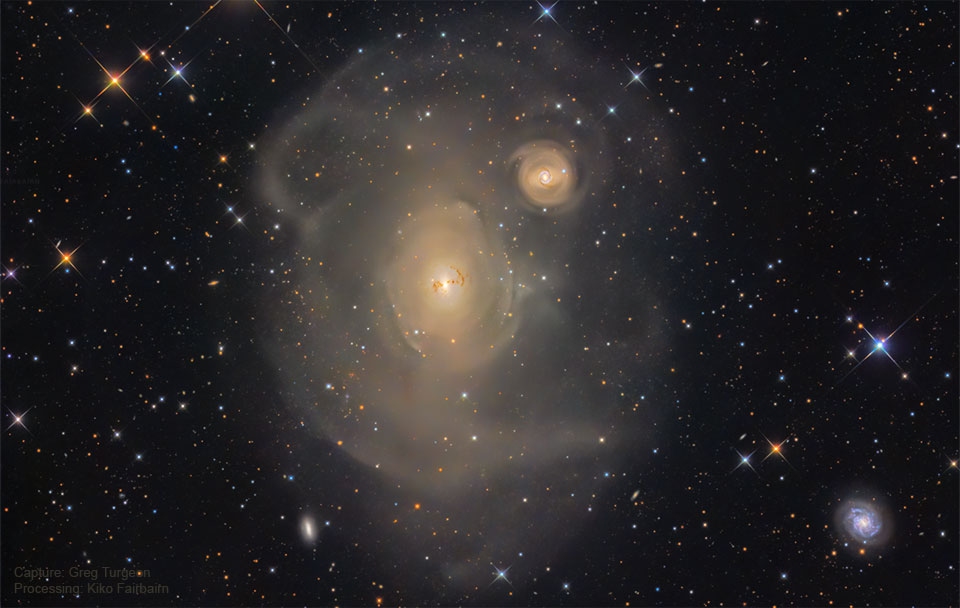2022年5月17日
NGC 1316: After Galaxies Collide
Image Credit & Copyright: Capture: Greg Turgeon; Processing: Kiko Fairbairn
Explanation: Astronomers turn detectives when trying to figure out the cause of startling sights like NGC 1316. Investigations indicate that NGC 1316 is an enormous elliptical galaxy that started, about 100 million years ago, to devour a smaller spiral galaxy neighbor, NGC 1317, just on the upper right. Supporting evidence includes the dark dust lanes characteristic of a spiral galaxy, and faint swirls and shells of stars and gas visible in this wide and deep image. One thing that >remains unexplained is the unusually small globular star clusters, seen as faint dots on the image. Most elliptical galaxies have more and brighter globular clusters than NGC 1316. Yet the observed globulars are too old to have been created by the recent spiral collision. One hypothesis is that these globulars survive from an even earlier galaxy that was subsumed into NGC 1316. Another surprising attribute of NGC 1316, also known as Fornax A, is its giant lobes of gas that glow brightly in radio waves.
Tomorrow’s picture: open space
NGC 1316:星系碰撞之后
影像提供与版权: 取像: Greg Turgeon; 影像处理: Kiko Fairbairn
说明: 在试图了解NGC 1316这类令人惊讶的天体之成因时,天文学家就变身为侦探。他们的侦察显示,身为庞大椭圆星系的NGC 1316,大约在1亿年前,开始吞食影像右上方的邻近较娇小之螺旋星系 NGC 1317。支持的证据包括螺旋星系的特征性黝黑尘埃带,以及在这幅广角深空影像里,清楚可见的昏暗恒星和气体涡旋和壳层结构。有一项尚待解答的问题为:以暗淡光点之姿散布在影像各处的球状星团,为何如此娇小?因为大部分的椭圆星系,都拥有比NGC 1316数量更多、亮度更高的球状星团。而这些观测到的球状星团非常年老,不可能是最近和螺旋星系碰撞后才形成的。假说之一指称,这些球状星团,是更先前另一个被NGC 1316吞并的螺旋星系所遗留下来的。NGC 1316另一个令人惊讶的结构为天炉A,一团在电波波段非常明亮的庞大瓣状气体。
明日的图片: open space



